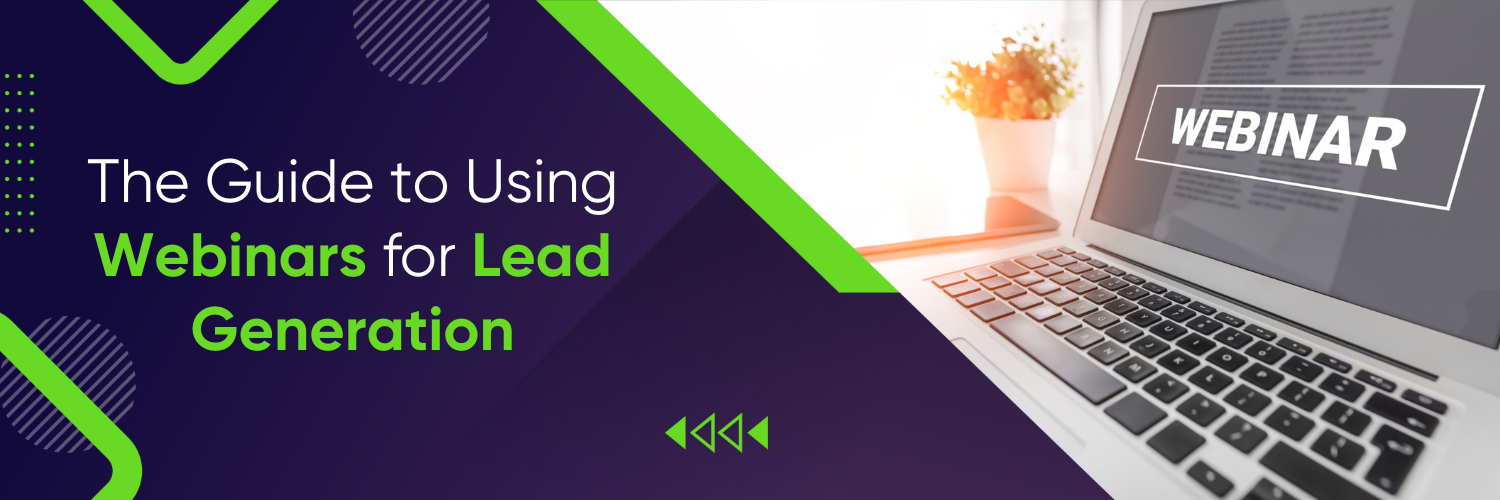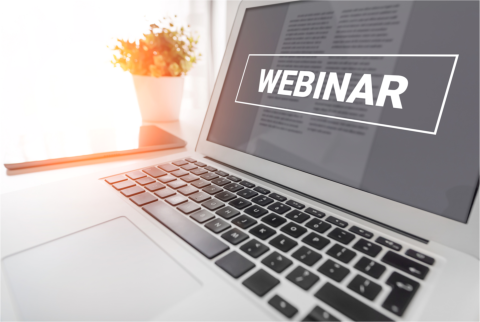What is a Webinar?
Webinars have emerged as a powerful tool for lead generation in the digital age. They offer businesses the opportunity to engage with their target audience in a meaningful way, showcase their expertise, and build trust and credibility. Webinars provide a platform for delivering valuable content, conducting interactive sessions, and capturing leads that are genuinely interested in your offerings. By incorporating webinars into your marketing strategy, you can generate high-quality leads and accelerate your business growth.
A webinar for lead generation is an online seminar or presentation conducted with the primary purpose of generating leads for a business or organization. It is a digital marketing strategy that allows companies to educate, engage, and capture potential customers’ information by offering valuable content in the form of a live or pre-recorded online event.
Benefits of Using Webinars for Lead Generation
Demonstrating Expertise
Webinars allow you to showcase your knowledge and position yourself as an industry expert. By delivering valuable insights and actionable information, you can establish credibility and trust with your audience.
Engaging Audience
Webinars offer a unique interactive experience, enabling real-time engagement with your audience. This fosters a sense of community and allows you to address questions and concerns directly, creating a deeper connection and increasing the likelihood of lead conversion.
Lead Qualification
Webinars attract attendees who are genuinely interested in the topic you are presenting. This helps you capture leads that are more likely to convert into customers, as they have already demonstrated an interest in your niche or solution.
Scalability and Reach
Unlike in-person events, webinars allow you to reach a wider audience, irrespective of geographical limitations. With the right promotion and a well-executed webinar, you can connect with prospects from all over the world and expand your reach.
Repurposing Opportunities
Webinars can be recorded and repurposed into various content formats, such as blog posts, videos, or podcasts. This enables you to extend the lifespan of your webinar content and reach a larger audience through different marketing channels.
Preparing for a Successful Webinar
Defining your webinar goals and target audience
Before diving into the logistical aspects of hosting a webinar, it is crucial to define your goals. Determine what you aim to achieve through the webinar, whether it’s generating leads, educating your audience, or promoting a new product or service. Additionally, identify your target audience, their needs, pain points, and interests, to tailor your webinar content accordingly.
Choosing the right topic and title
Selecting a compelling and relevant topic is key to attracting the right audience. Research industry trends, conduct surveys, or analyze customer feedback to identify topics that resonate with your target audience. Craft a catchy and informative title that clearly communicates the value participants can expect from attending your webinar.
Planning the structure and content of your webinar
Create a detailed outline or script for your webinar to ensure a smooth flow of content. Break down the presentation into logical sections and determine the duration for each segment. Include a mix of introductory slides, main content, case studies, and a Q&A session. Consider incorporating interactive elements, such as polls or surveys, to keep participants engaged throughout the webinar.
Selecting the appropriate webinar platform
Choose a reliable webinar platform that aligns with your requirements. Consider factors like the number of attendees, features like screen sharing and chat functionality, recording capabilities, and integration options with your existing tools or CRM system. Popular webinar platforms include Zoom, WebEx, GoToWebinar, and Demio.
Promoting your webinar and driving registrations
Develop a comprehensive promotional strategy to drive registrations for your webinar. Leverage various marketing channels such as email marketing, social media, blog posts, and partnerships with industry influencers. Craft compelling landing pages and registration forms that highlight the value proposition of your webinar. Offer incentives, such as downloadable resources or exclusive discounts, to encourage sign-ups.
Creating Compelling Webinar Content
Crafting an engaging and informative presentation
Start your webinar with a captivating introduction to grab participants’ attention. Clearly outline the agenda and set expectations for what they will gain from attending. Structure your content in a logical and easy-to-follow manner, using a combination of slides, visuals, and supporting data. Incorporate storytelling techniques to make the content relatable and memorable.
Using visuals, multimedia, and interactive elements
Visual aids such as slides, infographics, or videos enhance the engagement and comprehension of your webinar. Use relevant images, charts, and graphs to illustrate key points. Integrate multimedia elements strategically to reinforce your message and maintain participant interest. Incorporate interactive elements like live polls, quizzes, or chat sessions to encourage active participation.
Incorporating storytelling and case studies
Stories and real-life examples are powerful tools for capturing and retaining audience attention. Weave compelling narratives that resonate with your target audience and connect with their pain points. Include case studies or success stories that demonstrate the effectiveness of your product or service. This will help build trust and credibility with your audience.
Addressing common pain points and challenges
Identify the common challenges or pain points faced by your target audience and address them in your webinar. Provide practical solutions and actionable insights that attendees can implement immediately. By demonstrating that you understand their needs and can provide valuable solutions, you increase the likelihood of lead generation and conversion.
Encouraging audience participation and Q&A sessions
Engage your audience throughout the webinar by encouraging active participation. Incorporate interactive elements like polls or Q&A sessions to involve participants and address their queries. This creates a sense of involvement and helps build a relationship with potential leads. Be prepared to respond to questions promptly and provide valuable insights during the Q&A session.
Leveraging Webinar Registration for Lead Capture
- Designing an enticing registration landing page: Create a visually appealing and informative landing page that highlights the key benefits of attending your webinar. Clearly communicate the value proposition and use persuasive copy to encourage registrations. Keep the registration form simple and ask for relevant information such as name, email address, and any additional details that align with your lead qualification criteria.
- Requesting relevant information from registrants: While keeping the registration form concise, gather the necessary information to qualify leads effectively. Depending on your business needs, you may request additional details like job title, company name, or industry. This information will help you segment and personalize your follow-up efforts.
- Offering valuable incentives to encourage sign-ups: Incentives can significantly increase registration rates. Offer exclusive resources, whitepapers, or discounts to registrants. These incentives provide additional value and incentivize attendees to engage actively during the webinar. You can also provide limited-time offers or bonuses exclusively available to those who attend the live session.
- Integrating webinar registration with your CRM or email marketing platform: Ensure that your webinar registration process integrates seamlessly with your customer relationship management (CRM) system or email marketing platform. This integration enables efficient lead capture, automated follow-ups, and segmentation for personalized communication. Set up automated workflows to nurture leads and move them through the sales funnel effectively.
Engaging and Nurturing Leads During the Webinar
- Welcoming and introducing attendees: Begin the webinar by welcoming participants and expressing gratitude for their attendance. Introduce yourself, your company, and briefly explain the agenda and what participants can expect. Establishing a warm and welcoming atmosphere from the start sets a positive tone for the rest of the webinar.
- Delivering a captivating opening: Capture participants’ attention with a strong opening that grabs their interest. Share an intriguing statistic, tell a relevant story, or pose a thought-provoking question. This will hook attendees and encourage them to stay engaged throughout the webinar.
- Maintaining a conversational and interactive atmosphere: Engage your audience by adopting a conversational tone and actively involving them in the discussion. Ask open-ended questions, encourage participants to share their thoughts in the chat, and respond to their comments or questions. This two-way interaction creates a sense of connection and involvement.
- Providing valuable content and insights: Deliver on the promises made during the webinar promotion by providing valuable content and insights. Share actionable tips, industry trends, or best practices that participants can implement in their own businesses. Demonstrate your expertise and establish yourself as a trusted authority in your field.
- Presenting calls-to-action (CTAs) and lead capture opportunities: Strategically place calls to action throughout the webinar to capture leads and move them further down the sales funnel. Offer relevant resources, such as ebooks, whitepapers, or free consultations, and direct attendees to a landing page where they can provide their contact information in exchange for these resources.
Post-Webinar Lead Conversion Strategies
- Following up with attendees and no-shows: Send a personalized follow-up email to all webinar attendees, expressing gratitude for their participation and providing additional resources or insights related to the webinar topic. For those who registered but didn’t attend, send a separate email inviting them to access the webinar recording or offering an alternative opportunity to engage with the content.
- Sharing webinar recordings and resources: Make the webinar recording accessible to those who missed the live session or want to review the content. Share the recording on your website, social media platforms, or via email. Include a brief summary or key takeaways to entice viewers to watch the recording.
- Conducting surveys and gathering feedback: Send a post-webinar survey to gather feedback and insights from participants. Ask about their experience, what they found valuable, and any suggestions for improvement. Use this feedback to refine future webinars and tailor your lead nurturing efforts based on participant preferences.
- Segmenting and scoring leads for personalized follow-ups: Segment leads based on their engagement level and the information they provided during registration. Score leads based on their level of interest and engagement during the webinar. Use this data to personalize follow-up communications and deliver targeted content that aligns with each lead’s needs and interests.
- Implementing email marketing campaigns and automated workflows: Set up automated email workflows to nurture leads after the webinar. Send relevant content, case studies, or success stories that further educate and engage your leads. Use email marketing campaigns to continue building relationships and guide leads through the buyer’s journey. Monitor engagement metrics to identify highly engaged leads for personalized sales outreach.
Conclusion
We explored the power of webinars as a lead-generation tool. We discussed the importance of preparation and creating compelling content, as well as leveraging registration for lead capture. We also covered strategies for engaging leads during the webinar and converting them into customers after the event. By following these guidelines, you can effectively use webinars to generate high-quality leads and drive business growth.
To take your lead generation efforts to the next level and maximize the potential of webinars for your business, consider partnering with Ubique Digital Solutions. Our team of experts specializes in webinar marketing and can help you create, promote, and optimize your webinars for optimal lead generation and conversion. Contact us today to discuss how we can collaborate and boost your business to success. Don’t miss out on the opportunity to harness the full power of webinars for your lead generation strategy. Take action now and partner with Ubique Digital Solutions.
FAQs
Q:How long should a webinar typically be?
The ideal webinar duration varies depending on the content and audience preferences. In general, aim for a webinar length of 45 minutes to an hour, including time for Q&A. Shorter webinars of around 30 minutes can also be effective for specific topics or when targeting busy professionals.
Q:How do I choose the right webinar platform?
When selecting a webinar platform, consider factors such as the number of attendees you expect, desired features like screen sharing or polls, recording capabilities, and integration options with your existing tools. Popular webinar platforms include Zoom, WebEx, GoToWebinar, and Demio.
Q:What are some effective ways to promote my webinar?
Promote your webinar through various channels such as email marketing, social media, blog posts, and partnerships with industry influencers. Create compelling landing pages, use targeted advertising, and leverage your existing customer base to spread the word. Consider offering incentives or early-bird discounts to encourage registrations.
Q:Should I charge a fee for my webinar?
The decision to charge a fee for your webinar depends on your business model and goals. Charging a fee can help qualify leads and generate revenue directly from the webinar. Alternatively, offering free webinars can attract a larger audience and build trust with potential customers. Evaluate your objectives and target audience to determine the best approach.
Q:How can I ensure high attendee engagement during the webinar?
To foster attendee engagement, create a conversational atmosphere, incorporate interactive elements like polls or Q&A sessions, and deliver valuable content that addresses their pain points. Encourage participants to share their thoughts and questions in the chat, and respond to their comments promptly. Incorporate visual aids and storytelling techniques to maintain interest throughout the webinar.
Q:What are some effective post-webinar follow-up strategies?
Follow up with attendees by sending personalized emails expressing gratitude and providing additional resources related to the webinar topic. Share the webinar recording and offer opportunities for further engagement. Implement automated email workflows to nurture leads with relevant content and monitor engagement metrics to identify highly engaged leads for personalized follow-ups.
Q:Can webinars be repurposed for other marketing channels?
Absolutely! Webinars can be repurposed into various content formats, including blog posts, videos, podcasts, or social media snippets. Transcribe the webinar and turn it into a blog post or create short video clips highlighting key insights. This allows you to extend the reach of your webinar content and cater to different audience preferences.














